Wagyu beef is not your ordinary meat. You can cook it just like any other beef. But why do that when you’ve chosen the best? This article shares five expert tips. They will guide you from selecting the perfect Wagyu cut to the best cooking methods. These tips ensure you enjoy the rich flavor and tender texture of premium Wagyu beef.1
Key Takeaways : Wagyu beef
- Wagyu beef is a premium and highly sought-after type of beef that originates from Japan, known for its intense marbling and tender texture.
- Choosing the right Wagyu cut is crucial for achieving the best cooking results, with factors like grading, marbling, and thickness to consider.
- Proper storage and thawing methods are essential to keep Wagyu beef fresh and of high quality.
- Wagyu beef shines with little seasoning, letting its natural flavors stand out. Cooking methods like pan-searing, grilling, and sous vide work well.
- Cooking Wagyu beef to medium–rare is ideal. Letting the meat rest after cooking is crucial for its best taste.
Understanding Wagyu Beef
Wagyu beef is an exclusive type of beef from Japan, famous for its exquisite marbling and tenderness.2 The term “Wagyu” includes four specific Japanese cattle breeds: Japanese Black, Japanese Brown, Japanese Polled, and Japanese Shorthorn.3 These breeds are exceptional in producing marbled fat, enhancing Wagyu beef’s unique taste and texture.23
What is Wagyu Beef?
Wagyu beef is top-quality, available only from certain regions in Japan.4 It is known for its superior marbling and flavor, thanks to the special Japanese cattle breeds.4 The highest grade, A5 Wagyu, is determined by its quality and yield.4
Breeds and Varieties of Wagyu
The four main Wagyu breeds in Japan are Japanese Black, Japanese Brown, Japanese Polled (Japanese Milking), and Japanese Shorthorn.3 In Japan, mostly black cattle are found, with additional varieties in Kochi and Kumamoto.3 The U.S. started its Wagyu journey in 1975 when it welcomed two black and two red bulls.3
Wagyu Grading System
Wagyu beef’s marbling ability is the focus of its grading using the Japanese BMS standards.2 This system combines a letter (A, B, or C for yield) with a number (1-5 for marbling).4 A5 is the top grade, based on various factors including color and texture.4
Choosing the Right Wagyu Cut
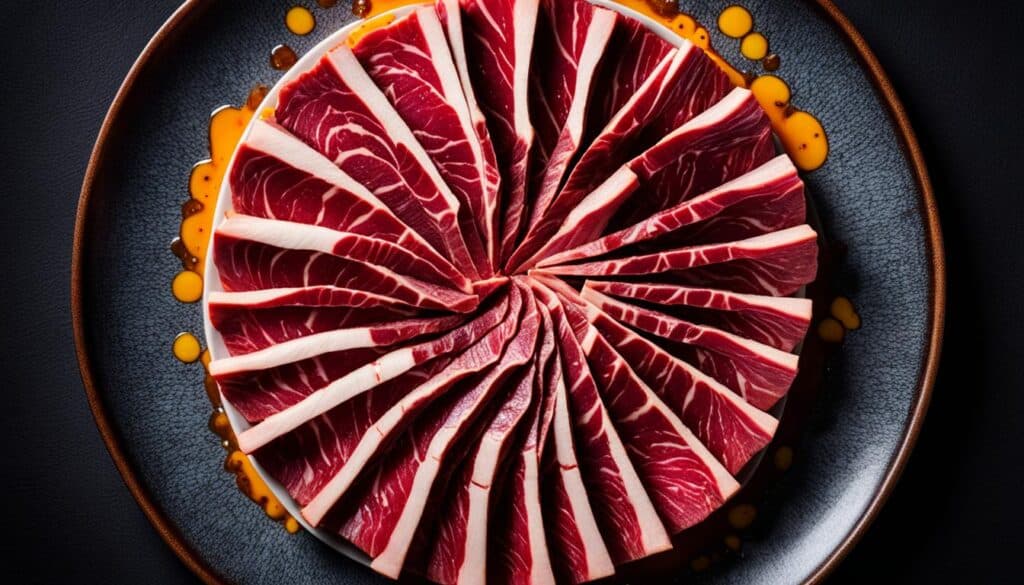
Choosing the right Wagyu cut makes a big difference in your meal. Wagyu beef is well-known for being super tender and flavorful. This is because of how the cows naturally have a lot of fat marbling.5
Popular Wagyu Cuts
The ribeye, filet mignon, and tomahawk are some favorite Wagyu cuts.5 With their high marbling, they give you a special dining experience.
Factors to Consider
It’s important to look at the grading, marbling, and thickness when picking a Wagyu cut.5 Also, buy from a place you trust to be sure it’s real and high-quality.5
American Wagyu is like Kobe beef in the U.S. The American Wagyu Association says it’s thanks to crossbreeding with Wagyu cows.6 It’s well-looked after, making it a top choice in the food world. Its high price shows the hard work that goes into it.6
| Wagyu Cut | Characteristics | Ideal Cooking Method |
|---|---|---|
| Ribeye | Exceptional marbling and tenderness | Pan-searing and finishing in the oven |
| Filet Mignon | Incredibly tender and buttery texture | Grilling or sous vide |
| Tomahawk | Dramatic presentation with a thick, bone-in cut | Grilling or reverse-searing |
The Japanese Black cattle, called Kuroge Washu, make the top A5 Wagyu.6 Every Wagyu steak has its own taste and tenderness because of the different marbling.6
To get that amazing marbling, Wagyu cows are raised for 2-3 years.6 This makes it very special and explains the high price.6
Storing Wagyu Beef Properly
Storing Wagyu beef the right way keeps it fresh and tasty. When you get Wagyu online, it usually comes frozen. This keeps it in good shape.7 You should freeze it right away to keep the meat from getting freezer burn. Thaw the beef in the fridge slowly when you plan to cook it. It should be about six hours per pound of meat.7 Let the beef sit out to get to room temperature before cooking. This makes the cooking even all the way through.
Handling Fresh Wagyu
8 Keep Wagyu beef in the fridge at 32-39°F (0-4°C) and 70% humidity to stay fresh.7 It’s good in the fridge for a few days if you use airtight packaging and put it in the coldest spot.
Freezing Wagyu Beef
7 You can freeze Wagyu beef well if it’s packed airtight because of the fat. This keeps its great quality.8 Freeze it quickly after buying to save its taste and texture.8 It can stay good in the freezer for several months. But the longer it’s there, the more flavor and quality it might lose to freezer burn.8 Freezing it in a vacuum–sealed bag protects it from freezer burn but might change its texture. Airtight containers keep the right humidity.7 According to the USDA, it’s safe to keep Wagyu beef frozen for up to 12 months without it going bad.
7 Watch out for signs that your Wagyu beef has gone bad. Look for a slimy feel, color changes, strange smells, or dryness. This means it might not be safe to eat.
7 Thaw Wagyu slowly in the fridge for two days to keep it juicy. Don’t use a microwave or hot water. These can take away from the natural flavors.
Thawing and Preparing Wagyu Beef
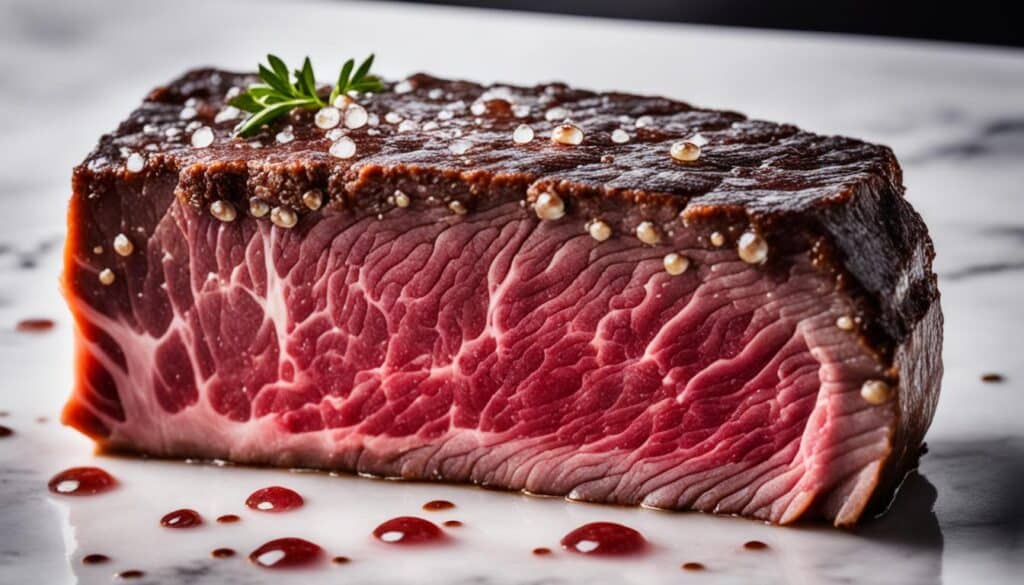
Thawing Wagyu beef the right way is crucial for a tasty meal. If you ordered Wagyu online, defrost it in the fridge. This should take about six hours per pound of beef.7 After thawing, let it sit out until it’s room temperature. This usually takes 30 minutes.
Thawing Techniques
You can thaw Wagyu by moving it from the freezer to the fridge a day before you cook it. Or, place it in cool water for a few hours.9 Never use hot water or a microwave to defrost Wagyu. It melts fat easily, so these methods should be avoided.9
Bringing Wagyu to Room Temperature
Before cooking Wagyu, let it reach room temperature. This ensures the meat cooks evenly through. It takes about half an hour to do this.7 Then, your Wagyu will be ready for a perfect cook.
Minimal Seasoning for Wagyu Beef
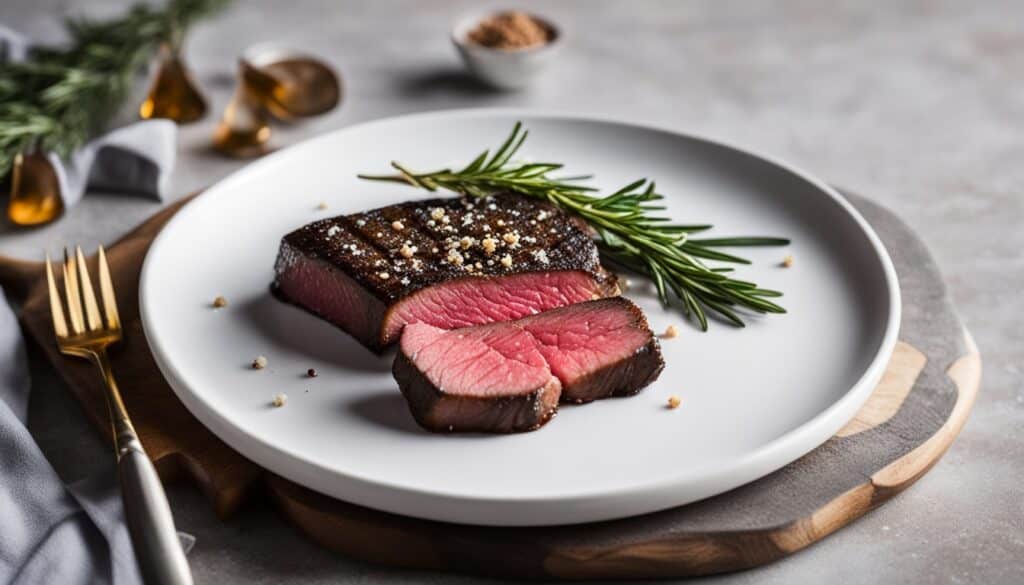
Wagyu beef is so good that it doesn’t need a lot of seasoning. Just salt and pepper can bring out its natural taste. It’s best not to add too many things. This can hide the real flavor and texture of the high-quality Wagyu.10 The idea is to let the Wagyu’s amazing quality speaks for itself.10
10 It’s great to use top-notch sea salt and black pepper on Wagyu steak.10 Don’t use lots of different seasonings. They can take away from the meat’s natural taste.10 After you season the steak, let it sit for 30 minutes. This helps the flavors soak into the meat well.10 Keep it simple when you season Wagyu steak. You don’t want to hide its delicate flavor.10
10 It’s better to skip the heavy marinades to fully enjoy Wagyu beef’s marbling.10 You can try seasonings like smoked paprika or cayenne for a different taste. But, use them little.10 Before you cook, just season the steak. This way, the salt and pepper stay well on the steak’s surface.10
10 Fresh herbs like rosemary, thyme, and garlic can make Wagyu steak even more flavorful.10 Use special seasonings in small amounts on Wagyu. This ensures the meat’s rich, buttery taste stands out.10
Cooking Methods for Wagyu Beef

Wagyu beef can be cooked many ways, but some are better.11 It’s great to sear in a cast–iron skillet or grill it. These methods seal in the juices and create a tasty outer layer.12 With its high fat, Wagyu also excels in sous vide cooking, keeping the meat juicy and flavorful. No matter how you cook it, don’t overdo Wagyu. A medium–rare to medium finish is best to enjoy its rich texture and taste.
Pan-Searing Wagyu
12 To pan–sear Wagyu, first get your skillet or burner very hot. This quick sear makes a nice crust but leaves the meat inside tender and juicy.
Grilling Wagyu
12 Grilling Wagyu can give you amazing flavors. The grill’s high heat chars the surface but keeps the meat inside soft and full of flavor. It’s important to watch your temperature and time to avoid overcooking.
Sous Vide Wagyu
11 Because of its fat, Wagyu is perfect for sous vide. This method cooks it uniformly, retaining its delicious taste and tenderness. It’s especially helpful for cooking thicker Wagyu cuts perfectly.
Doneness for Wagyu Beef
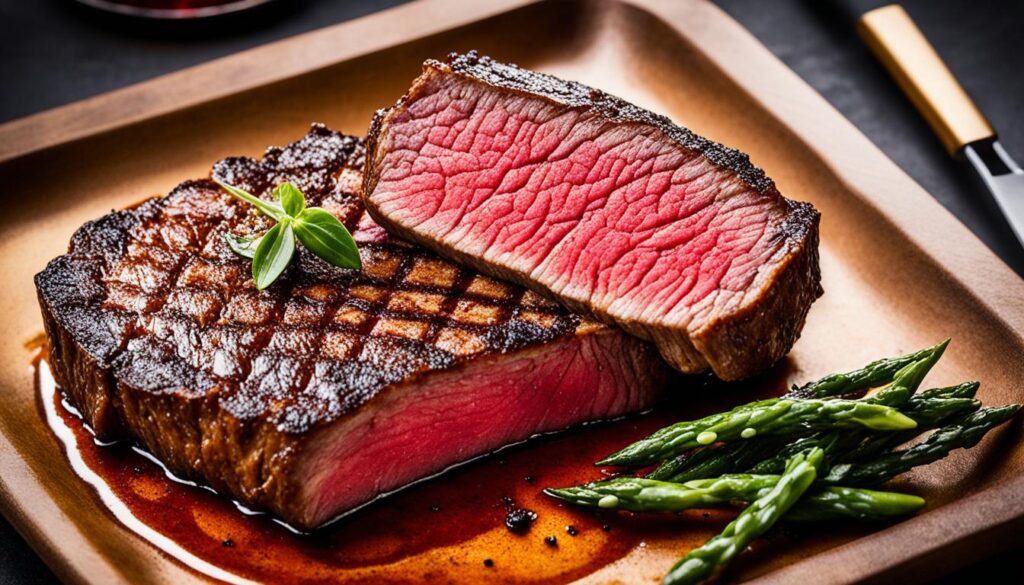
Getting the right doneness is key to enjoying Wagyu beef. The perfect doneness is medium-rare, reaching an internal temp of 125-135°F.13 Overcooking can make Wagyu lose its tenderness and taste.14
Temperature Guide
To cook a Wagyu steak perfectly, keep an eye on its internal temperature. The fat in Wagyu melts at a lower temperature than other beef fat,14 so aim for 130 F for rare and 170 F for well-done.13
Resting Wagyu After Cooking
Let your Wagyu rest for 5-10 minutes after it’s done. This step helps the meat fibers relax and soak up the juices. It makes the final dish more tender and tasty.14
Wagyu Beef
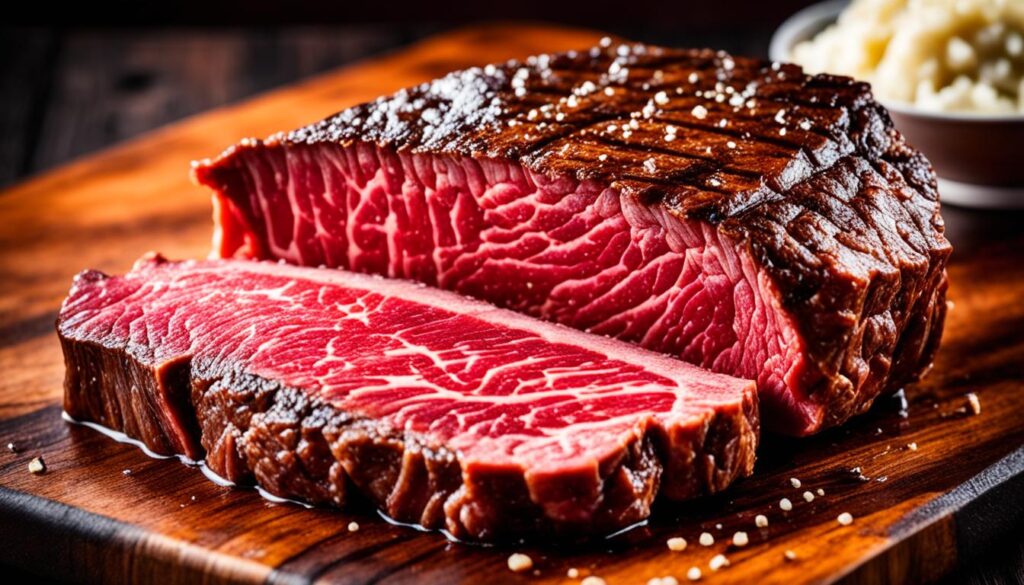
Japanese and American Wagyu beef differ in how they’re cooked. Japanese Wagyu steaks are thinner, so they cook quickly.3 They’re usually cooked to a medium doneness. American Wagyu is thicker and best at medium-rare, around 125-135°F.15 It’s crucial to watch the temperature and adjust the cooking time for the best taste.
Japanese vs. American Wagyu
Thickness is a key difference between Japanese and American Wagyu steaks.3 Thinner Japanese Wagyu is usually cooked to a medium level. Thicker American Wagyu is perfect at medium-rare.15 Keeping an eye on the temperature and adjusting the cook time is vital for the right texture and flavor of the Wagyu beef.
Cooking Differences
Japanese Wagyu and American Wagyu require different cooking times because of their thickness.315 Japanese Wagyu cooks faster due to being thinner. It’s often made to a medium doneness. American Wagyu’s thickness makes it great at medium-rare, about 125-135°F. It’s key to watch the temperature and adjust the cook time for both types to get the right taste and tenderness.
Serving and Pairing Suggestions
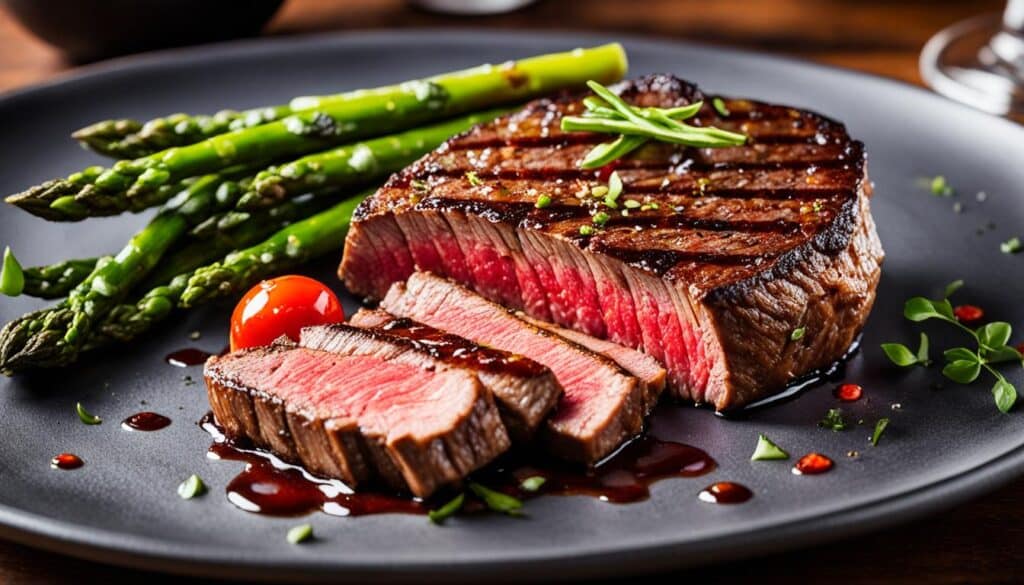
Wagyu beef has a rich, buttery taste and is very tender. This makes it great for serving and pairing with different foods.16
Wine Pairings
For wines, choose bold reds to match Wagyu’s intense marbling. Good choices are Cabernet Sauvignon, Malbec, or Sangiovese. They highlight the beef’s flavor well.16
Side Dishes
Pair Wagyu beef with simple and tasty sides. This ensures the beef remains the star. Options include roasted veggies, mashed potatoes, and a basic salad.1617
Enhance your meal with sautéed mushrooms or a mix of roasted vegetables. Try also rice pilaf, tomato garlic bruschetta, or feta blueberry salad. For those who love potatoes, options like fully loaded or simple sautéed green beans are great.17
Don’t forget about crispy sweet potato fries or a couscous tomato salad. They can bring something extra to your meal. Even simple grilled corn on the cob goes well.17
The key is to choose sides that make the Wagyu beef taste even better. This ensures a great dining experience.17
Advanced Wagyu Cooking Techniques
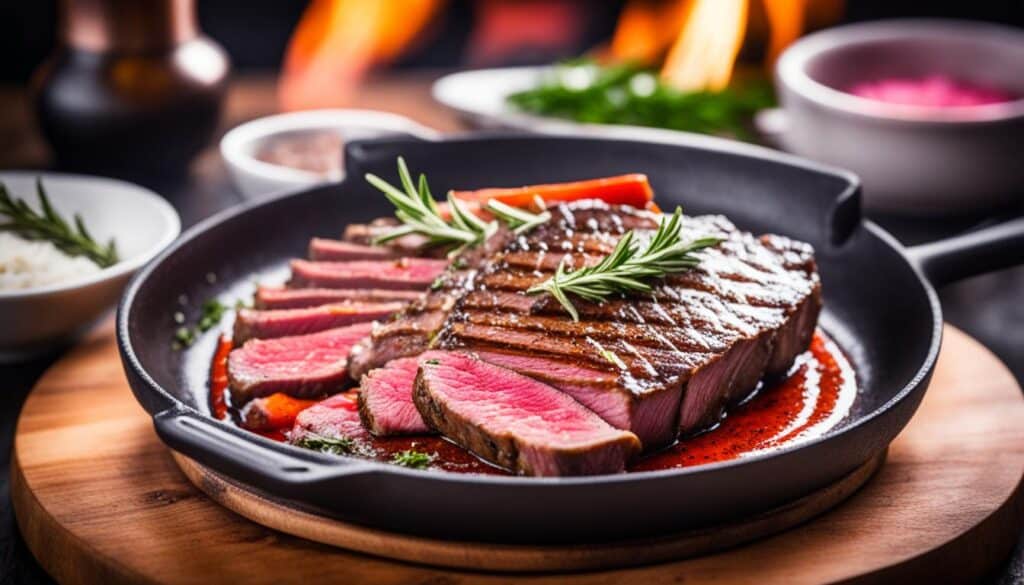
For those wanting to boost their14 Wagyu cooking game, consider advanced methods like dry-aging and smoking. Dry-aging can make the flavors more intense and the meat softer. Smoking adds a special taste that goes well with Wagyu’s natural richness.14 These methods need more time and skill. But, they offer a chance to explore new flavors and textures for true Wagyu fans.14
Dry-Aging Wagyu
Dry-aging Wagyu beef brings out even more of its amazing taste and tenderness.18 The more Wagyu it has, the more tender and flavorful it becomes.18 To dry-age, you must control the temperature, humidity, and airflow. This helps the meat’s natural enzymes soften it, making it more tender.14 Remember, meat with lots of marbling can cook too quickly, so you need high heat to sear it well.18
Smoking Wagyu
Smoking Wagyu beef gives it a rich, complex taste.1418 The meat’s marbling, rated BMS 6 to 12, changes how you cook it.18 Proper smoking brings out the umami flavors in Wagyu and adds a soft, smoky taste.14 Typically, Japanese Wagyu is cooked at lower heat to keep a pink center.18 Smoking it well takes careful work, but it’s worth it for the amazing dish you get.
Also Read: Beef Liver Nutrition: Benefits & Healthy Recipes
Conclusion
Trying out Wagyu beef at home can really be exciting and tasty. But, it needs a bit of work and care. You should know what makes Wagyu special19, pick the right piece20, and learn the best ways to cook it.
This way, you can enjoy its amazing rich taste and soft texture. The advice in this article will help you cook Wagyu like a pro. Soon, you’ll be making top-notch meals with Wagyu in your kitchen.
Whether it’s Japanese Wagyu, American Wagyu, or Australian Wagyu, quality is key20. Choosing the best grade ensures every meal is unforgettable. Follow the steps and tips, and you’ll bring Wagyu’s luxury right to your table.
Get creative with your Wagyu cooking. Try new ways of cooking and enjoy the unmatched taste and tenderness. With some knowledge and practice, you can cook Wagyu beautifully. Then, share this lovely food experience with your loved ones.
FAQs
Q: What is Wagyu beef?
A: Wagyu beef is a high-quality, premium beef known for its rich marbling and melt-in-your-mouth texture. It originates from Japan and is prized for its exceptional flavor and tenderness.
Q: What is A5 Wagyu beef?
A: A5 Wagyu beef is the highest grade of Japanese Wagyu beef. The “A” represents the yield grade (amount of usable meat) and the “5” represents the marbling score (quality of the fat). It is considered the pinnacle of beef excellence.
Q: How should I cook Wagyu steak?
A: It is recommended to cook Wagyu steak using high heat and for a shorter amount of time compared to other types of beef. This helps to preserve the marbling and ensure a tender, juicy result.
Q: Is Wagyu beef worth the price?
A: Many people believe that Wagyu beef is worth the price due to its exceptional quality, unique flavor, and unmatched tenderness. It is often considered a luxury item for special occasions.
Q: Where can I buy Wagyu steaks?
A: Wagyu steaks can be purchased from specialty butcher shops, gourmet food stores, and online retailers that specialize in high-quality meats. It’s important to look for reputable sources to ensure you are getting authentic Wagyu beef.
Q: What makes Wagyu beef different from other types of beef?
A: Wagyu beef is known for its high marbling content, which contributes to its rich flavor and buttery texture. The genetics of Wagyu cattle, specific feeding methods, and strict grading standards also set Wagyu beef apart.
Q: Can Wagyu beef be sourced from outside of Japan?
A: Yes, Wagyu beef can be sourced from countries outside of Japan, such as Australia and the United States. While Japanese Wagyu is highly regarded, Wagyu cattle have been successfully raised in other regions, producing quality beef.
Source Links
- https://ladyjaye.com/2022/01/06/5-tips-for-cooking-wagyu-beef-like-a-master/
- https://aspenridgebeef.com/blog/the-differences-between-natural-angus-beef-vs-american-wagyu-beef/
- https://wagyu.org/for-consumers/what-is-wagyu-beef
- https://blog.goldbelly.com/what-is-wagyu/
- https://fellersranch.com/blogs/fellers-ranch-blog/how-to-choose-the-right-wagyu-ribeye-steak
- https://plumcreekwagyubeef.com/blogs/news/the-ultimate-steak-guide-understanding-wagyu-beef-cuts-and-more
- https://holywagyumeats.com/how-to-store-wagyu-beef/
- https://wagyuwetrust.com/blogs/news/storing-wagyu-beef-best-practices-for-preserving-the-quality-and-freshness-of-premium-cuts
- https://doublegwagyu.com/pages/cooking-faqs
- https://recipes.net/articles/how-to-season-wagyu-steak/
- https://www.markys.com/blog/wagyu-cooking-methods
- https://www.grillseeker.com/how-to-cook-wagyu-steak/
- https://www.businessinsider.com/cooking-wagyu-steak-wrong-way-best-results-2023-5
- https://blog.thermoworks.com/beef/cooking-real-japanese-wagyu-steaks/
- https://en.wikipedia.org/wiki/Wagyu
- https://imperiacaviar.com/blogs/blog/what-to-serve-with-wagyu-beef
- https://wagyuman.com/blogs/wagyu-stories/what-to-serve-with-wagyu-beef-10-delicious-side-dishes
- https://pitmaster.amazingribs.com/forum/the-pit-mastery-program/beef-steak-brisket-roasts-prime-rib-etc/1487084-cooking-a-wagyu-steak
- https://stixasia.com/wagyu-101-everything-you-need-to-know-about-this-famous-beef/
- https://themeatery.com/en-ca/blogs/main-blog/what-to-consider-when-buying-wagyu-beef


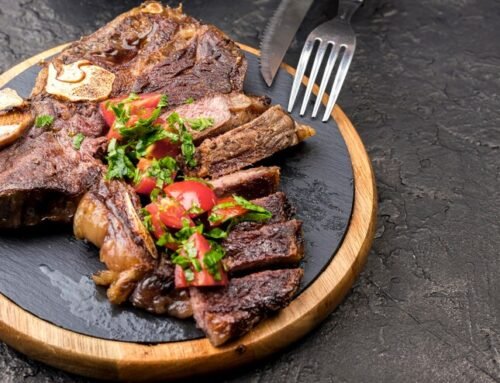
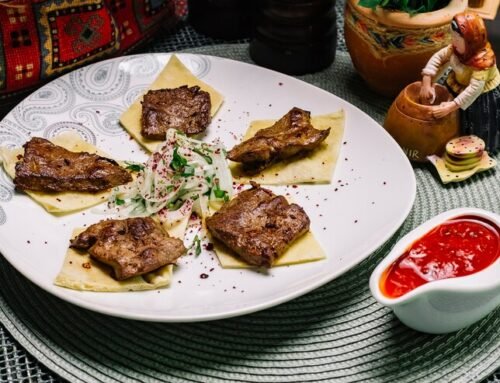

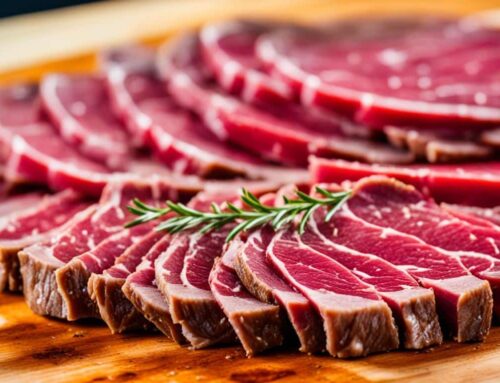
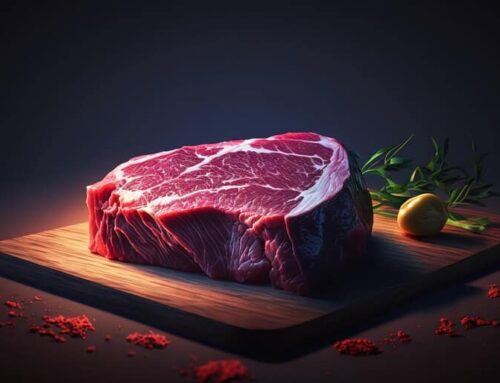
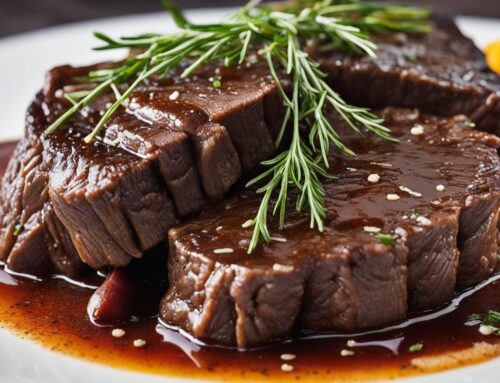
Leave A Comment